Span Prototypes
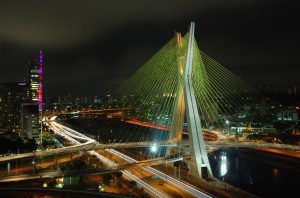
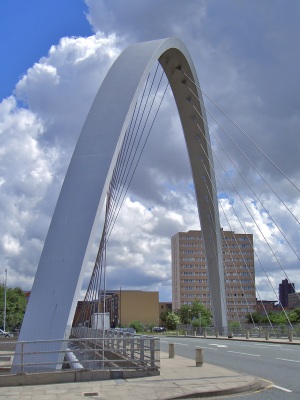
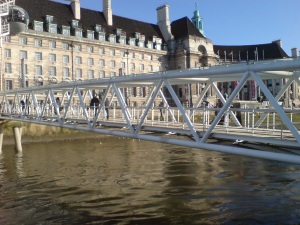
Octavio Frias de Oliveira Bridge
Single Mast Cable Stay Bridge
(image by Marcosleal)
Hulme Arch Bridge
Arch Bridge
(image by Mike Peel)
Bridge at the London Eye
Warren Truss Bridge
Jonathan KaranArchitecture Portfolio |
ARC 253 Project 1: Form & Function |
For the first assignment of the semester was to create a 12' wide pedestrian bridge that will cover a 190' span, with an operable opening that can fit a cardboard box ship 40' high by 30' wide. There is water 10' below the ground, and no structure can go into the water. Members cannot be more than 12"x12" in size, meaning the members also have a maximum span of 15'. |
Starting: |
||||||||||||||
Final: |
||||||||||||||
Span Prototypes |
||
|
|
|
Octavio Frias de Oliveira Bridge |
Hulme Arch Bridge |
Bridge at the London Eye |
Movement Analogy |
||
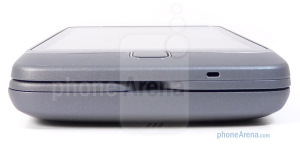 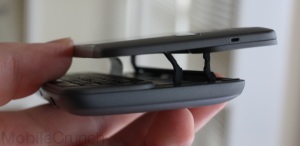 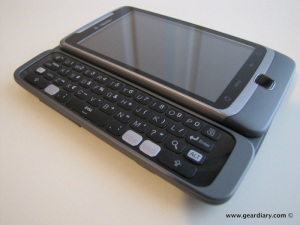 |
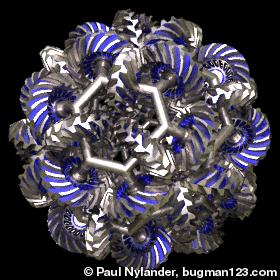 |
 |
HTC Vision's "Z-Hinge" |
Gears |
Pulleys |
Concept Combination |
|||
|
 |
 |
 |
 |
This doesn't really seem feasible; the opening motion would be fine, but how could the closing operation work? |
This could work; there could be actual controlled points where the hinges could start moving. |
Maybe if the roadbed had a truss supporting it from below, it could be shaped into this? |
 |
Gears can maybe be used in the mast, but they can't drive the movement alone, unless the path itself was heavily reinforced. |
Used to transfer motion from one point and direction to another, possibly in a different power ratio. This could work to a point, but it ends at the cables, and should be in conjunction with a pulley at the very least. |
This could work in a truss, since the moving point is right next to the structure. In addition, gears could be fixed at joints in the truss. |
 |
The mast gives a good fixed point, and the design of a pulley looks natural next to the multiple cables nearby. However, the horizontal distance means there's no real lifting motion available. |
The arch would need to totally encompass the opening area, but it'd probably be the case with a bridge of this span anyway. Pulleys could be used to lift the movable parts from fixed points directly above. |
Pulleys could be used to move the entire truss, but this seems prohibitively difficult and not very interesting. Maybe carve out the opening and have the truss more heavily built up over that? |
Preliminary designs |
|
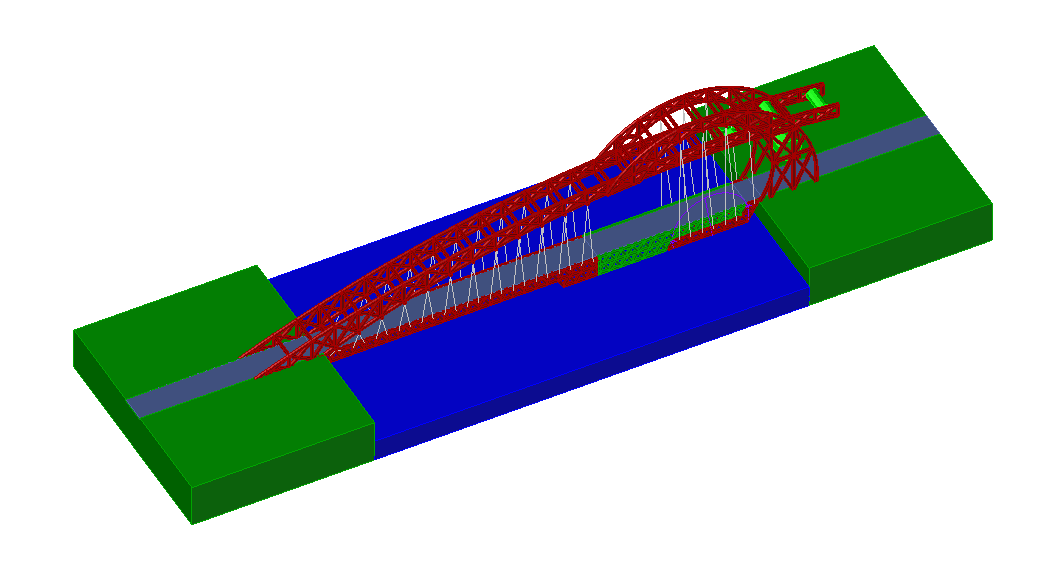 |
 |
Final Design: Elevations |
||
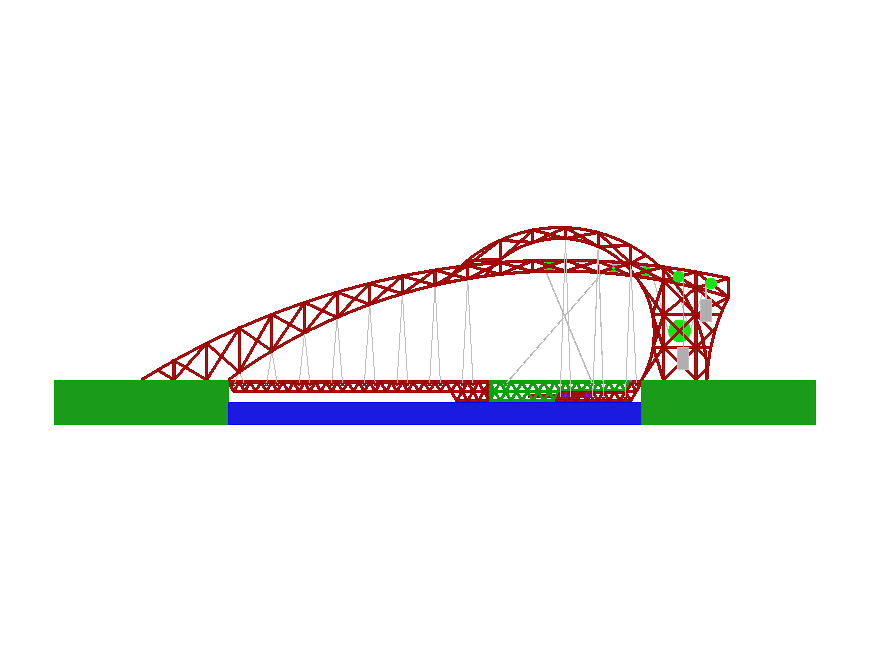 |
 |
|
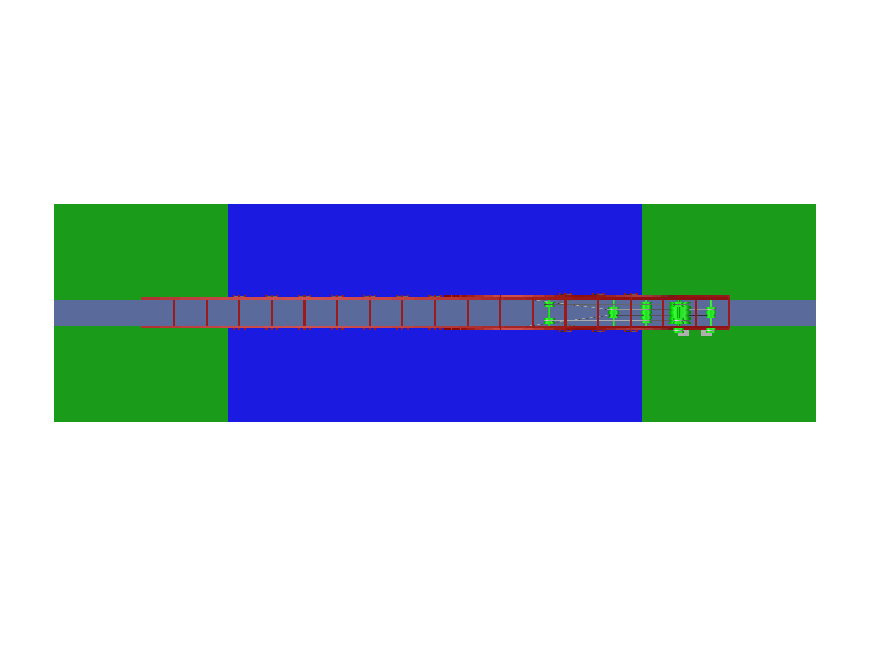 |
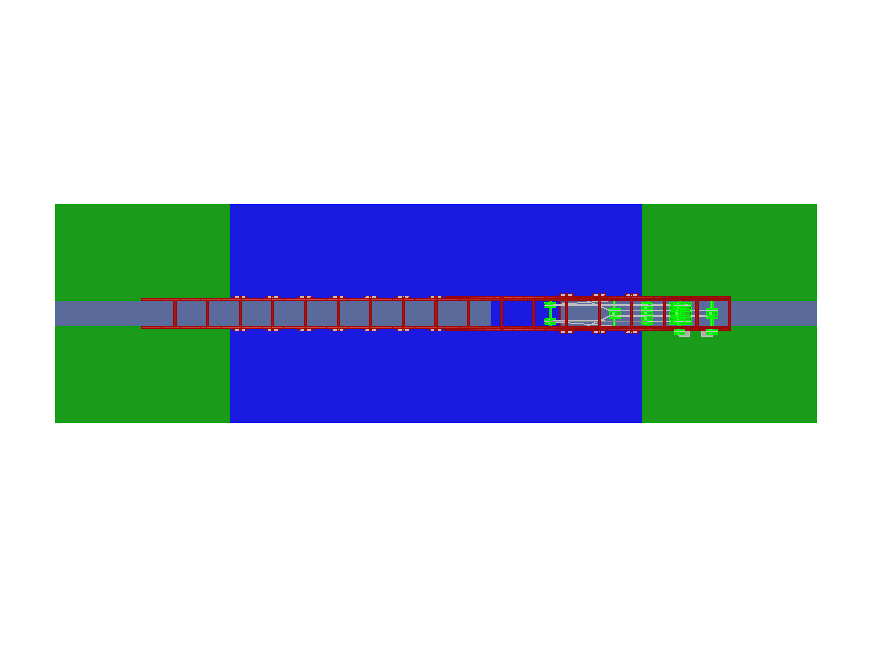 |
|
 |
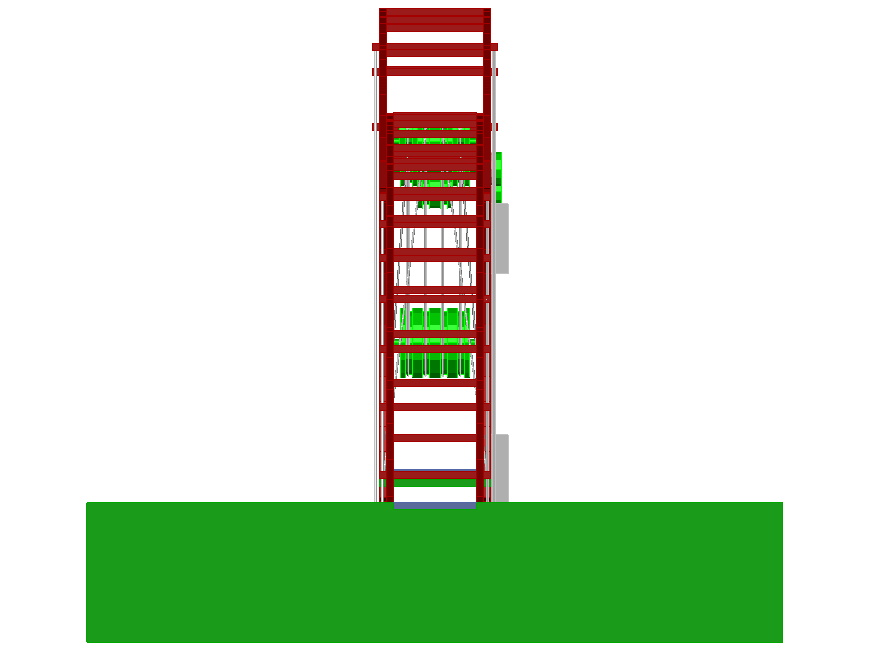 |
|
Final Design: Axonometrics |
||
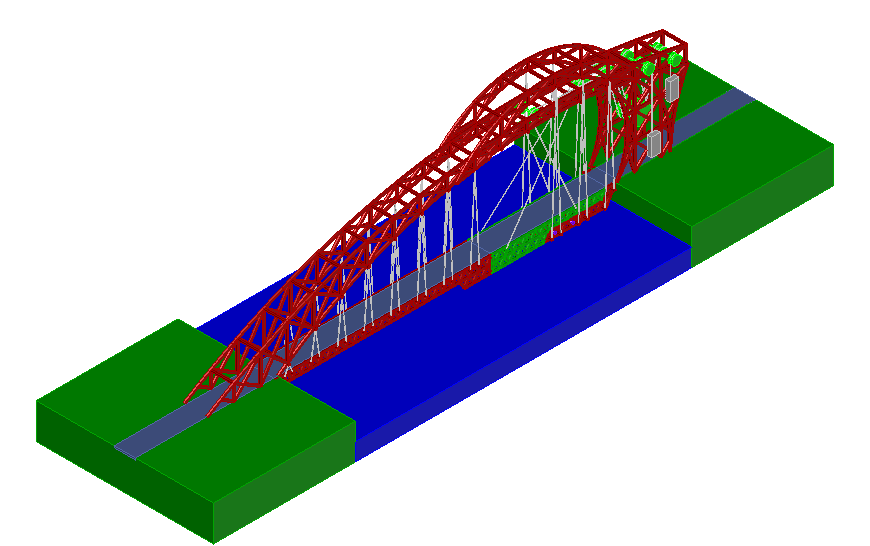 |
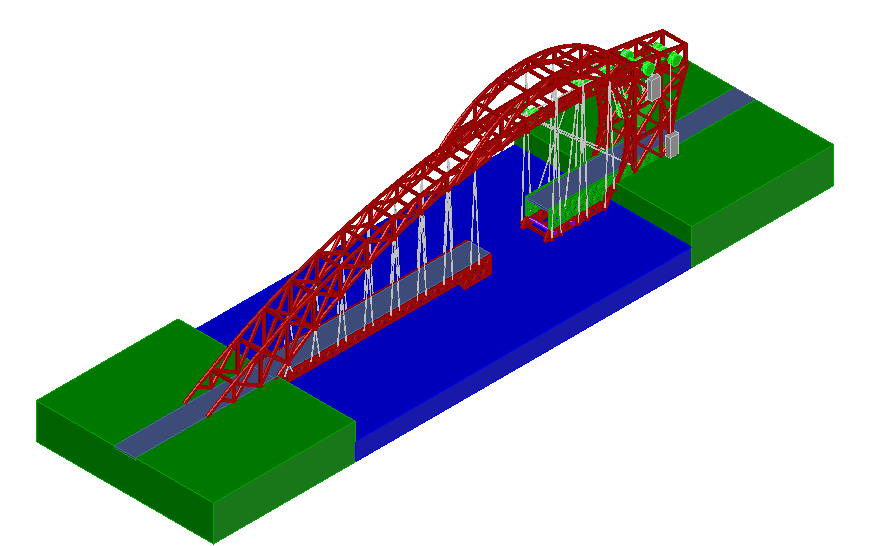 |
|
 |
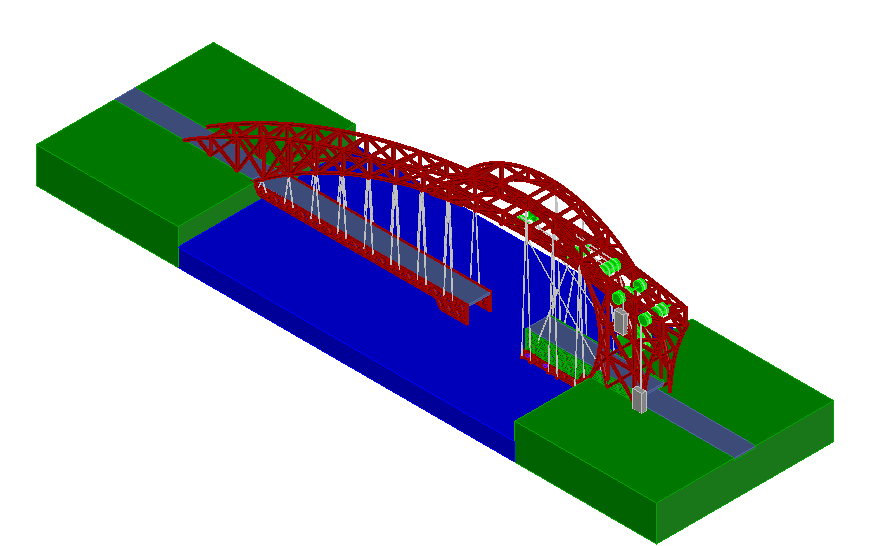 |
|
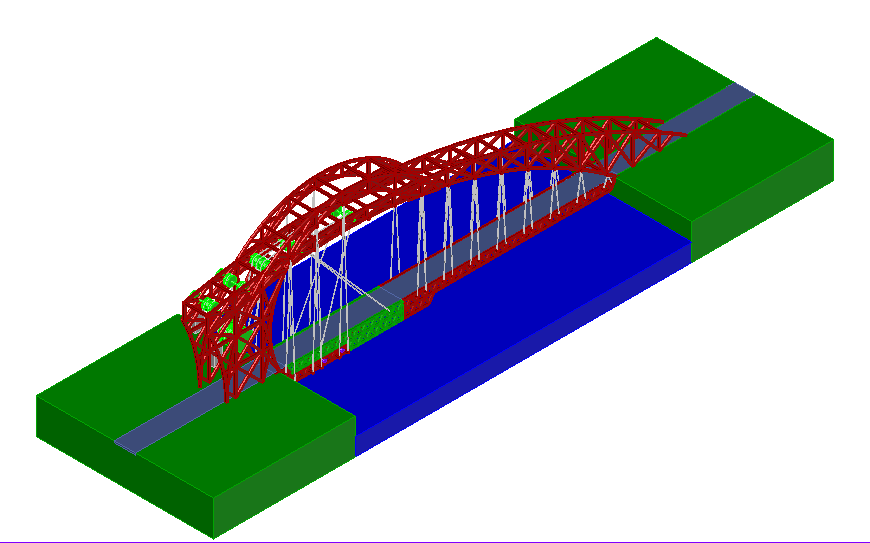 |
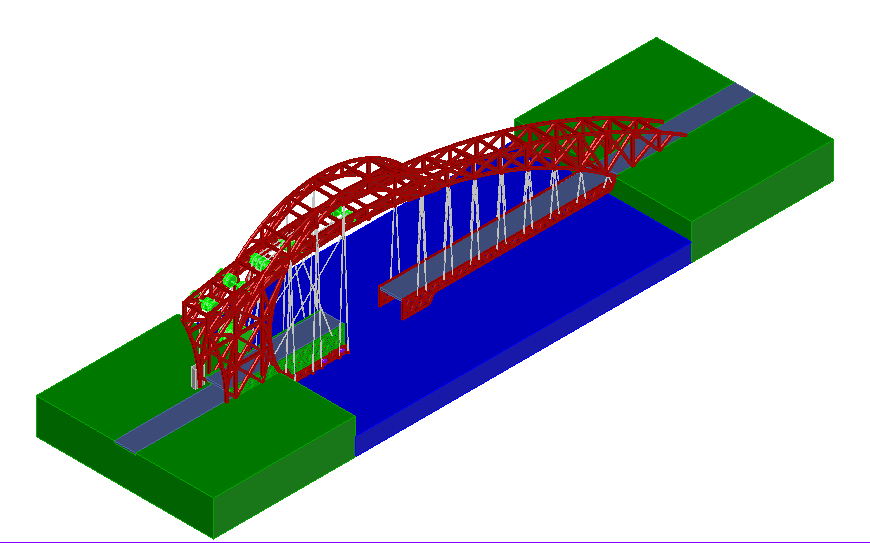 |
|
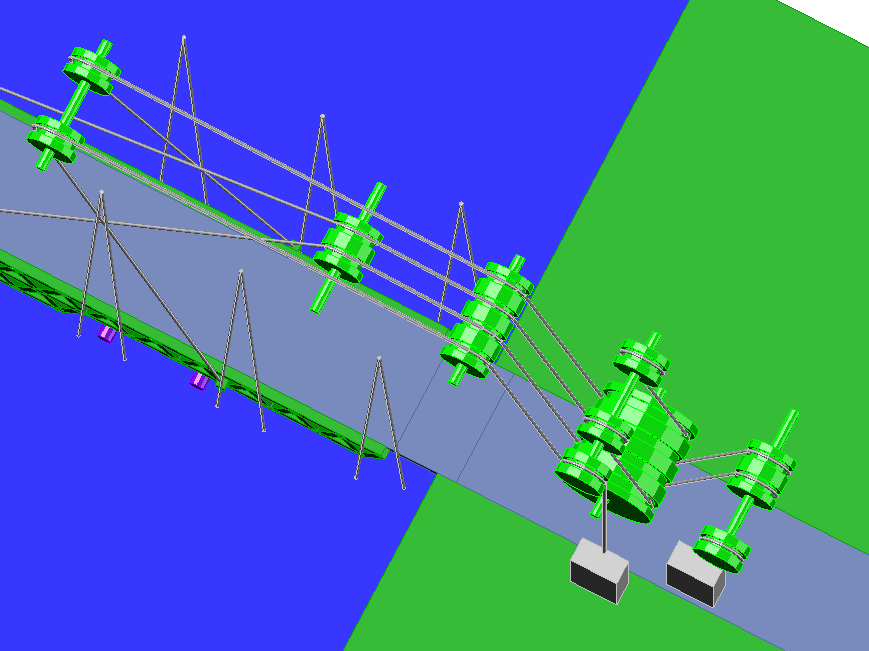 |
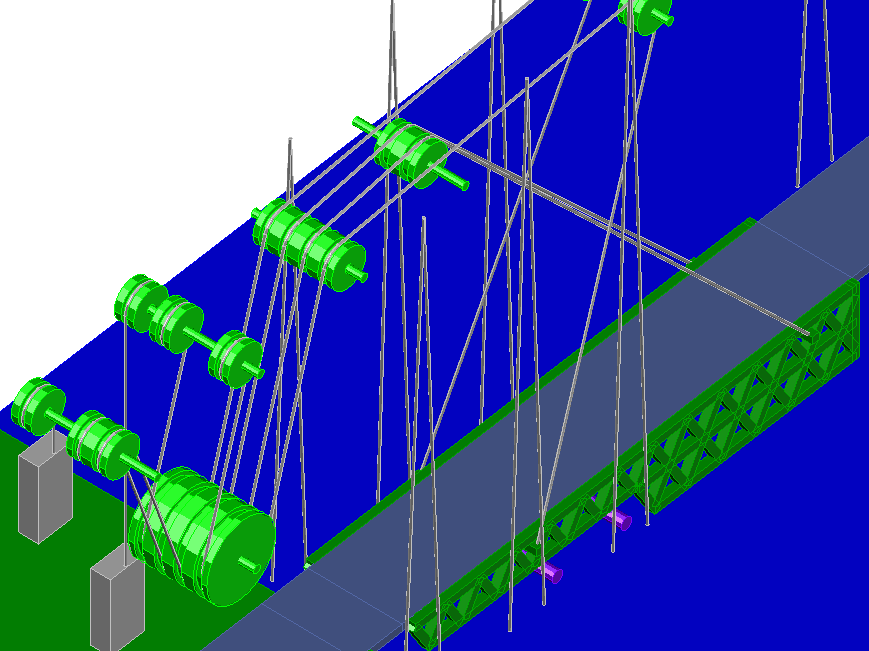 |
 |
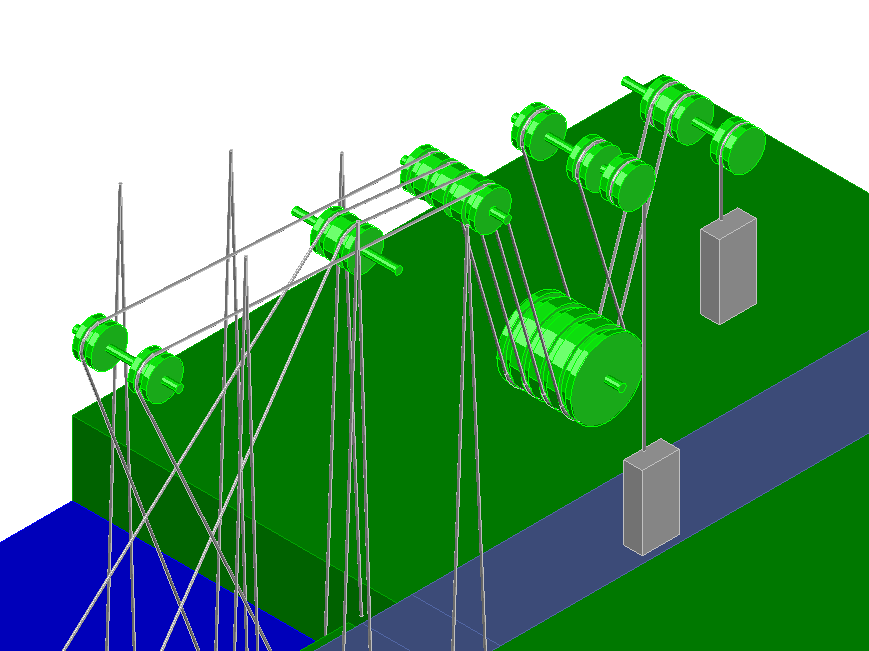 |
Final Design: Animations |
|
|